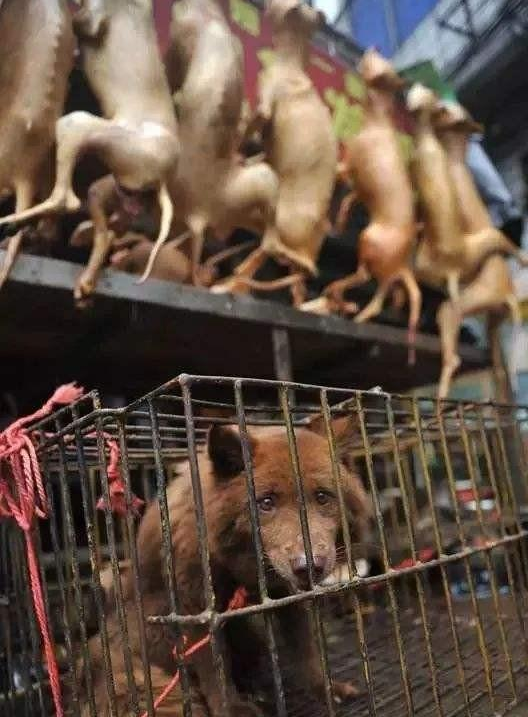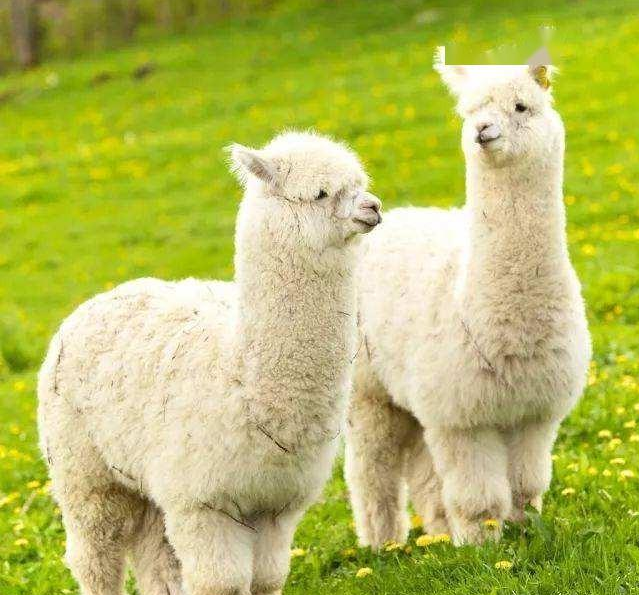On March 31, the Standing Committee of the Shenzhen People’s Congress passed the Regulations on Comprehensively Prohibiting the Consumption of Wild Animals in the Shenzhen Special Economic Zone, which will come into force on May 1, replacing the Regulations on Prohibiting the Consumption of Wild Animals in the Shenzhen Special Economic Zone, which has been implemented for 17 years.

One change is most noticeable in the 2020 edition compared to the 2003 edition – theConsumption of animals utilized for non-food purposes for scientific experimentation, public display, and pet keeping is prohibited.Including animals with pet functions can’t be eaten anymore.
This article is directly understood by the public as“No pet dogs or cats.”。
This reflects the contradictory mentality of Shenzhen. Both want to “civilization” a big step, but also to the reality of “compromise” a small step.
What do you mean by “a big step forward in civilization”? Let’s compare the 2003 version, which prohibited the consumption of nationally and provincially important wild animals, as well as those declared by the forestry department of the State Council, except for those that had been successfully bred in captivity, raised in large numbers, and licensed for consumption. At that time, the scope of the ban was limited to “wild animals”. The 2020 version expands the scope of the ban. It includes not only wild animals, but also lab-raised, zoo-raised and domestic pets.
After comparing the Guangzhou Municipal Regulations on Prohibiting Indiscriminate Eating of Wild Animals issued by Guangzhou on April 9, Shenzhen’s “Declaration on the Rights of Dogs” is even more advanced because the scope of the Guangzhou version of the ban on eating is the same as Shenzhen’s 2003 regulations 17 years ago.
What about a small step of “compromise”? The same is true for “prohibiting the consumption of animals and their products for non-food purposes, such as scientific experimentation, public display, and pet breeding.” Animals that are “kept as pets,” such as huskies and poodles, are prohibited because they are used to satisfy the needs of the public.Human spiritual needsThe, can’t eat.
The reverse of this statement means that dogs and cats are not prohibited from being eaten in Shenzhen as “food utilization”.
Are there any dogs and cats for “carnivorous purposes”? Yes, for example, the annual “Yulin Lychee Dog Meat Festival” in Yulin, Guangxi Province, triggers conflicts between dog lovers and dog meat lovers almost every year.

In my hometown of Zhanjiang, for example, there is a tradition of eating “meat dog” in the Leizhou area, “dog meat rolls three times, the gods can not stand”. In the 1990s in the city, you can often see the sale of dog meat night stalls, whenever the night falls, the daytime vegetable market has become a street of late-night snacks, shopkeepers will be slaughtered and boiled meat dog hanging in the stalls of the most conspicuous position, next to the stewing pot, according to the different requirements of the customers to provide white cuts, cooking and stir-frying, simmering dog meat dishes.
Whenever we saw the dog’s head that was hanging in the stall with its teeth showing, our mom was worried that we could not resist the temptation to steal it, and she would sternly and nervously remind us that we could not eat it, we could not eat it, and that if we ate it, we would have to suffer retribution.
In fact, my mom herself doesn’t even eat beef or lamb.
It is impossible for Shenzhen to effectively achieve food safety when the first rat is at the opposite end of the spectrum.
First, you can’t get more citizens to respect the rules.For the person who puts his emotions on dogs and cats, he won’t try to taste any of them. For those who don’t mind tasting, they see any cat or dog like a dish. This is because it is impossible to tell which are pet dogs and cats and which are edible dogs and cats. How do you enforce the law against stealing edible pet cats and dogs? How can you tell if what is being made into a dish is a dog or a cat, a cow or a sheep, a pet dog or a cat for consumption?
Third, you can’t keep more dogs and cats from being slaughtered.Because of the exceptions created in the rule, it would be easy for people to avoid the maximum tenfold penalty by proving, for example, that “the dog I’m eating isn’t a pet dog, it’s a stray dog.” and be exempted from up to ten times the penalty.

Third, you can’t get the administration to effectively reduce the cost of enforcement.All policies are subject to countermeasures. In order to combat “double robbery” and reduce the rate of traffic accidents, Shenzhen opened a city-wide “motorcycle ban” precedent, and now the electric motorcycle is still filled with streets and alleys. The ban on eating dogs and cats led to an increase in the cost of eating dog meat market in Shenzhen, there are two workarounds, one is to become illegal to continue to exist, and the other is the industry chain by the neighboring cities to take over, resulting in the city and the city bordering on the dog and cat food market flourished.
There should be a “one size fits all” approach to banning dogs and cats.
First, there should be no distinction between dog rights.Dogs and dogs should be able to communicate with each other verbally, and after May 1, a poodle met a “meat dog” on the streets of Shenzhen, she said contemptuously:“I’m a pet dog, I fulfill the spiritual needs of humans, no one dares to eat me, you’re a meat dog, you fulfill the stomach needs of humans, you’re born to be eaten, it’s really tragic.”There is no difference between this kind of discrimination and the racial discrimination of 200 years ago, when white people said to black people: “White people are born superior, black people are born into slavery”, except that this kind of “dog discrimination” has been established by human beings in the form of legislation.


Secondly, to resolve the problem of “fighting” between the “edible” and “prohibited” provisions.On April 8, the Ministry of Agriculture and Rural Development released the National Catalogue of Livestock Genetic Resources (Draft for Opinion), which lists 18 species of traditional livestock and poultry, including: pigs, common cattle, cattle, buffaloes, yaks, large amount of cattle, sheep, goats, horses, donkeys, camels, rabbits, chickens, ducks, geese, turkeys, pigeons, quail and so on. The 13 species of special livestock and poultry include sika deer, horse deer, reindeer, alpaca, guinea fowl, pheasant, partridge, mallard, ostrich, mink, silver fox, blue fox and raccoon. It is stated in the Notes that one of the purposes is to safeguard the lives and health of the people.
Note that there are no “dogs or cats” among the 31 animals.
And the fifth point of the Notes is devoted to the note “on dogs”:“With the progress of human civilization and the public’s concern and preference for animal protection, dogs have been “specializing” from traditional livestock to companion animals, which are generally not regarded as livestock in the international arena, and it is not appropriate to include them in the management of livestock in China.”
As you can see, dogs and cats are not livestock.
However, Article 3 of the Shenzhen regulations, “Animals that can be eaten”, is based on the National Catalog of Genetic Resources of Livestock. On the one hand, Article 2 of the Shenzhen regulations says that the consumption of pets is prohibited, but it does not explicitly prohibit the consumption of dogs for meat, and on the other hand, Article 3 of the National Catalog of Genetic Resources of Livestock says that the National Catalog of Genetic Resources of Livestock does not include dogs.
Do you think “non-pet” dogs and cats can eat it? And “pet” rabbits, alpacas, ostriches?
Obviously, the second and third are fighting here.
Here’s how the MARD Note defines the relationship between livestock and terrestrial wildlife:For the 31 species included in the Catalog, they are managed under the Livestock Law, and for species not included in the Catalog and growing in the wild, they are managed under the Wildlife Protection Law.
Dogs and cats are not in the Catalog and do not grow in the wild, so they are in a gray area. Shenzhen this knife want to cut a square, part of the gray into the category of can not eat (pet cats and dogs), the other part of the gray into the category of can be eaten (dogs for meat), leaving a hidden danger.
Third, you should abstain from eating cats and dogs.Since the laws and regulations at the national level do not specify the gray areas, and Shenzhen wants to be a pioneer, it should be clear which cats and dogs can be eaten.
It’s safe to assume that judging whether or not it’s edible by whether or not it’s a pet is definitely not a good standard.
In fact, the Ministry of Agriculture and Rural Development has already given the answer in the Notes:
First, adherence to science.“Livestock and poultry must be domesticated in captivity over a long period of time and have stable artificially selected economic traits.”
Second, highlighting safety.“Prioritize food safety, public health safety, and ecological safety.”
Third, respect for national customs“Taking into account, inter alia, the needs of multi-ethnic production and life and traditional culture”;
Fourth, international harmonization“in the light of prevailing international practice and international custom”.
According to these four criteria, meat-eating dogs should comply with the norms of breeding and traceability of the source of meat. As for respecting national customs and international harmonization.
In my opinion, Shenzhen as a migrant city and international metropolis and inland cities, compared to the degree of openness or the difficulty of epidemic prevention are different. First of all in the national habits, the public for cats and dogs is to meet the spiritual needs of the degree of recognition, far higher than cats and dogs is to meet the oral needs of the degree of recognition; Secondly, if you want to eat, you can go back to belong to their own national habits of the region to eat; Thirdly, and the international integration, we do not need to deliberately in front of foreigners to show civilization, but also do not need to deliberately in front of foreigners to show what all eat the courage.
There should be an across-the-board ban on all cats and dogs in Shenzhen, not a ban on pet cats and dogs, so why stare at one part of the population and compromise with another?
It is only when we take a firm stand that we can be the first to start a trend, and when we are at two ends of the spectrum, we are bound to fail.

